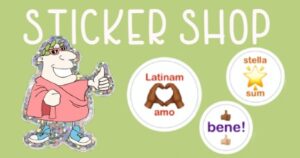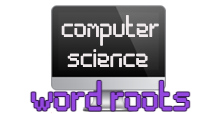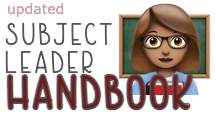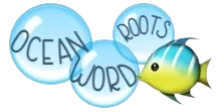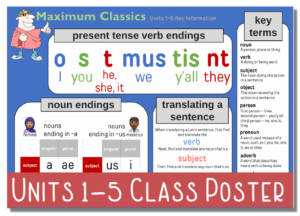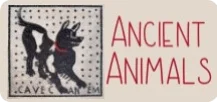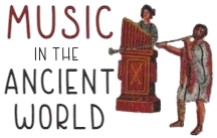How this lesson works
1. Collect the things you’ll need – your Unit 1 workbook and a pen/pencil.
2. Watch the video at the top of the page 
3. …complete the ‘Character names & mottoes’ exercise in your workbook.
4. Do Quiz A below
5. Continue the lesson by watching the video from where you paused it. When it asks, pause it again and…
6. …complete the ‘Supermarket match-up ’exercise in your workbook.
7. Complete the Quiz B below
8. (optional) Complete the ‘Invent a new product’ exercise in your workbook.
Unit 1 Lesson 3: Quiz A – Latin character names and mottoes match-up
Unit 1 Lesson 3: Quiz B – Supermarket Latin
What’s coming next
All lessons in Maximum Classics at Home Unit 1
This lesson explores the links between the Roman Empire, Ancient Greece and modern times. We learn just why Latin is a foundational part of English (thank you, William the Conqueror!) and how Latin is at the root of so many modern words today.
The Latin language borrowed a lot from Ancient Greek… and so have modern scientists. Knowing a little bit about Ancient Greek roots is a useful tool in understanding mathematical and scientific vocabulary.
So far in this unit, we’ve learned about the similarities between Latin and English. In this lesson we explore how English puts words together to make sentences, and how Latin does it differently.
The final lesson summarises the unit’s grammar and vocabulary learning. We also make our own mini dictionaries and recording the unit’s vocabulary in it before checking what we know in the Unit Quiz.


